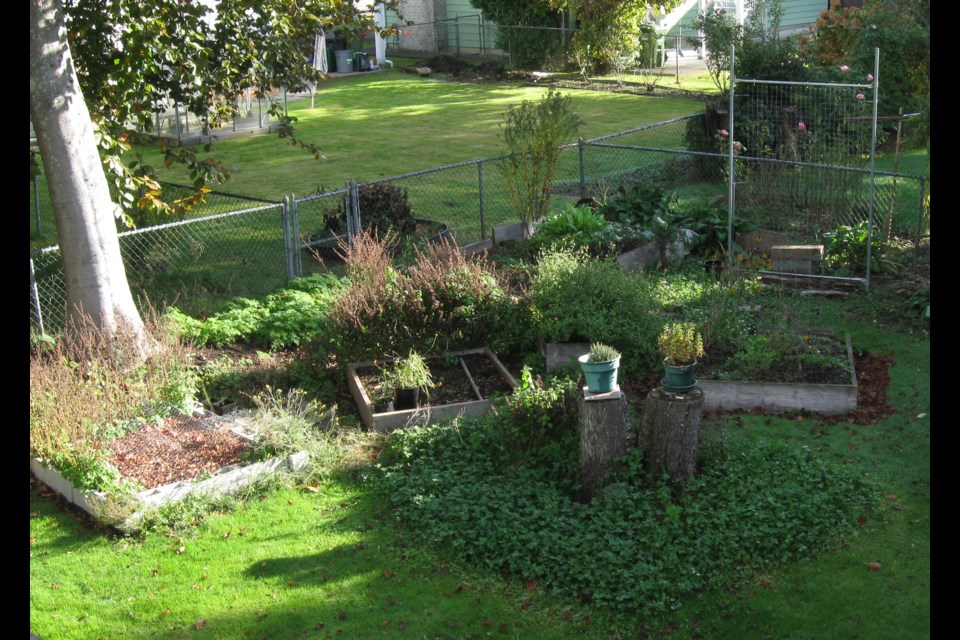When we arrived in Richmond, in 1956, the typical detached house on a residential street had a lawn in front and back, flower beds around the perimeter of the house, with a few fruit trees and berry bushes dotting the property. The back yard often included a vegetable garden. Yards were natural and functional.
In those years, most people looked after their yard on their own, as we did – my father mowed the lawn, I raked the grass (a chore I hated), and my mother tended the flowers and vegetables. We didn’t do anything special to attract birds, they just came, for the worms in the ground and their share of the fruit and berries.
During spring and summer the gardens displayed many different colours. Come fall, the tints tended towards yellows, reds and browns – tones that warmed our spirit in the colder temperatures when the garden’s glories had retreated. By year’s end, the only colours in the vegetable patch were the greens and purples of kale and cabbage.
At some point in the last decades, the concept of what a garden should include, the image it should project, began to change in our community. Did the change begin when the architectural design of the ‘typical’ Richmond house changed? Gardens gradually moved from natural to decorative.
In the course of that gradual metamorphosis, the term landscaping became increasingly popular – it does sound classier than gardening. The work of looking after a yard now got labelled maintenance. It’s often carried out by crews of men with no time to do anything manually. Armed with gasoline mowers, blowers, weed-whackers, etcetera, they work as fast as possible, sometimes thrashing the character out of the garden.
I subscribe to a different philosophy of gardening. I allow the seasons to transform the vegetation naturally, providing nourishment for birds by letting flowers and herbs go to seed and leaves to lie on the ground to harbour insects and worms.
Several houses on my street are rentals. The owners generally live abroad and hire people to do yard maintenance. Some are good, some very bad. Unfortunately, the house next door, now rented, has a crew that’s very, very bad. They wreak unforgivable damage in the garden, especially in the autumn. Last week they ran their gas-powered pole pruner along the roses in front of the house, slicing the bushes vertically; they sliced the peonies horizontally. In the back yard, they ran the pole pruner vertically along the shrubs and bushes to shear off anything that protruded. Then they reached my honeysuckle – still blooming – a part of which had grown over the fence. When I saw what they were about to do, I raced outside, yelling “Stop!” No sound came out. I felt I was in a nightmare. I tried again, this time successfully. They stopped, annoyed, leaving my honeysuckle partly severed.
Years ago, when the original owner resided there, the garden next door was natural and loved. Now the contrast between our two yards couldn’t be starker.
Sabine Eiche is a local writer and art historian with a PhD from Princeton University. She is passionately involved in preserving the environment and protecting nature. Her columns deal with a broad range of topics and often include the history (etymology) of words in order to shed extra light on the subject.



